It may not be common for home gardeners to prune houseplants, but like garden plants, they can actually benefit from pruning. Most plant varieties would benefit from at least a little shaping to keep them looking good and free from pests and diseases. In addition, you can also use it to encourage flowering. However, there is a risk of getting the pruning wrong, which could lead to long-term problems. To prevent this, below you will find brief instructions on pruning indoor plants, as well as tips on unsuitable varieties and the right time for pruning.
What to consider before pruning your houseplants
For most people, keeping their houseplants healthy and looking their best is a real challenge. With ideal growing conditions, the plants in your home are likely to grow tall and healthy. However, it may not be long before many plant varieties become unsightly, with dead leaves and flowers also causing plant disease and attracting pests. Regular pruning would therefore be a sensible solution that would allow for better growth and plant care in the long term.
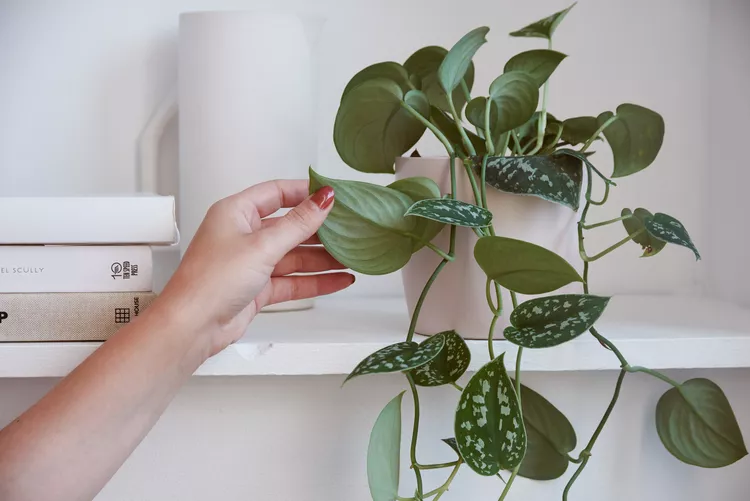
Additionally, some strains tend to grow uncontrollably in apartments, while others look scrawny and need pruning. Therefore, it would be good to learn how and when to prune your indoor plants properly to prevent the above problems. If you have never dealt with this before, this can seem like a daunting task. It is also important to choose the right cutting tool so that you do not damage more sensitive plant varieties and do not injure yourself. Thus, you can prevent overgrowth and promote plant health. Here is some useful information and simple steps that can help you with that.
How often and at what time of the year should you cut back plants in the living area?
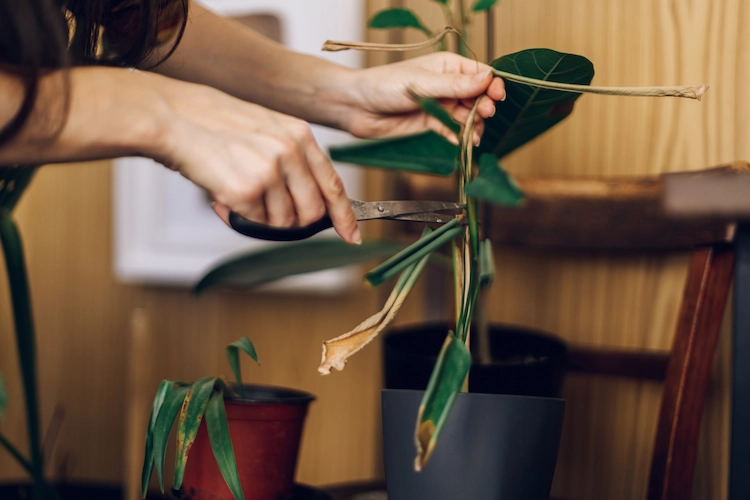
Although they spend their lives indoors, houseplants do best when pruned according to the season. Ideally, such pruning should be done early in their growing season, typically later in winter or early spring. Pruning too late in the season means you’re removing new growth before it has a chance to become established. For flowering species, it’s usually best to prune them once their flowering period is over. This ensures that you are removing old growth without affecting future bud production.
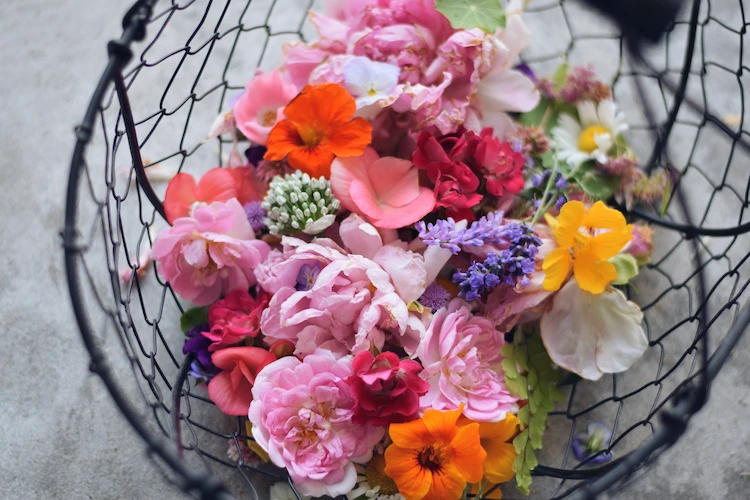
In addition, you can do a pruning once every few months. You should try not to remove more than 10-30% of the plant in one trimming session. You can always prune more in a month or two if the plant has already recovered. However, you should prune most woody houseplants throughout the year so you can stay on top of dead branches. In fact, when you prune your houseplants can play an important role. On the other hand, tropical plants have their growing season in autumn-winter. Trimming plants while they are dormant is more stressful on them and slows down their attempts to recover and regrow.
Which cutting tool is suitable for indoor plants?
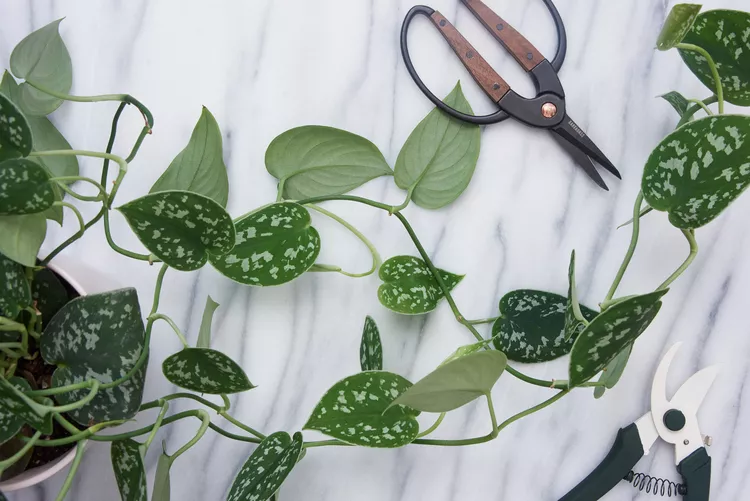
A pair of scissors will get the job done with precision, but make sure you use well-sharpened pruning shears. It is also important that you disinfect your cutting tool before use. Every time the branch or stem of your houseplant suffers a wound or cut, bacteria and fungal diseases become a greater risk.

Such weak spots in the plant wall are pretty much what plant killers like these are waiting for. Luckily, you can prevent this kind of infection by regularly cleaning your trimmer before trimming your houseplants. A 30 minute soak in a solution of 1 part bleach to 9 parts water should do the trick. It’s also a good idea to clean your tool after each cut when moving from plant to plant.
What types of plants shouldn’t be prune?

While you’ll prune many houseplants and let them benefit from regular plant care, some varieties struggle with pruning. This can result in them not growing back once their tips have been clipped. This includes most types of pine, cacti and orchids. Pruning can be even more dangerous for palm trees, as such plant varieties form a so-called terminal dominant bud at the top. If you cut these off, the palm tree can wither and eventually die.
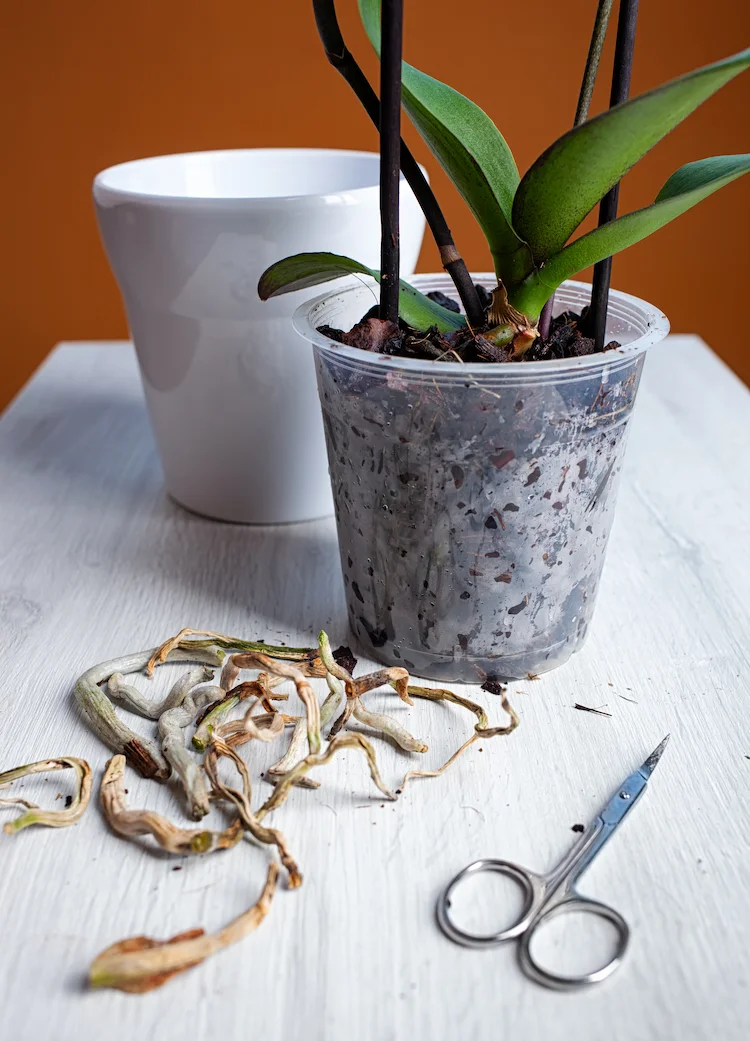
The only pruning these growths can handle is careful pruning to remove dead leaves. Similarly, you shouldn’t prune back many varieties of orchids beyond removing dead bud sites. Instead, you can make a cut where the spike emerges from the leaves. Then you can hope to see flowers again after a few months.
Follow simple steps and trim houseplants flawlessly
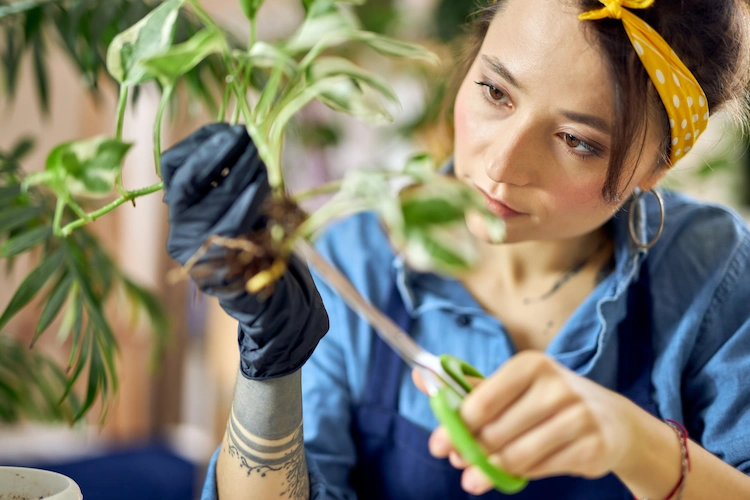
Simply pruning with kitchen scissors can look out of place for many potted plants, although the results are unlikely to be satisfactory. Instead, consider taking some thoughtful steps to give your growth the optimal trim.
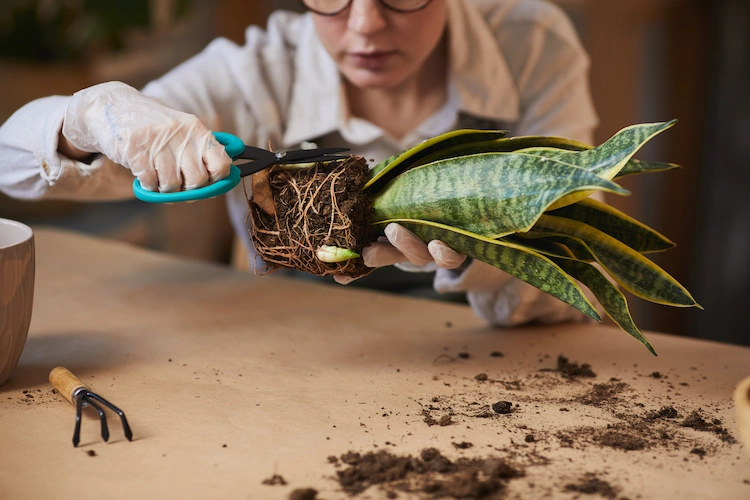
- Before using your pruning tool, it is important to observe the relevant houseplant and make a plan. Consider the overall shape and whether it looks too spindly or uneven on one side. Also look out for signs of diseased or dying foliage and try to see if new buds are already forming.
- Then select the appropriate cutting tool. If the plant’s branches are thick, like those of an indoor tree, consider using pruning shears. However, if they are slim, you can achieve a better and more precise pruning with kitchen scissors.
- Remove dead leaves and stems as soon as you are ready to prune. Begin by cutting off any wilted stems and leaves. You may also be able to peel these off with your hand depending on how dry they are. When doing this, try to remove these at a 45 degree angle to reduce damage to the remaining plant tissue. Watch for signs of disease and insect infestation at this time. Any infected stems and leaves should be either treated or removed.
- Then pluck wilted flowers. This step is known as bud bursting and encourages each species to produce new buds, allowing you to have consistent buds throughout the season. In addition, pinching the faded flowers is unlikely to harm the plant. However, cutting them off with scissors would also be fine. Try to get as close to the main stem as possible so you don’t leave unsightly stems behind.
- It’s now time to treat overgrown stems and branches when trimming your houseplants to shape them and keep leggy growth at bay. Start by cutting back half of the longest branch of the plant and angle the cut at a 45 degree angle. Cut off any side shoots that look out of place. Also, be sure to cut to just above the nodules on the stem. This is where the leaves meet the stems and buds form. New growth will appear in these spots and removing them will leave the plant looking sparse.
Propagate cuttings for more plants

This is an optional step that you could do after pruning if needed. The ideal candidates for propagation are plants with long, healthy stems. You are unlikely to succeed with weak or diseased stems or leaves. In addition, you should have at least 3 to 10 cm of trunk or leaf cuttings to regrow. For houseplants like ivy, you can also cut along the stem just below one of the nubs, which will allow new roots to start growing at the nub itself.
- Pruning houseplants and propagating them in potting soil – If you’ve just pruned some healthy plant debris, it’s possible that some of them will grow back. The most common way to do this is to plant them in sandy soil. Apply some root growth powder before planting the stem cuttings about 3 inches deep in the potting soil. Water the cutting when it dries up and wait a few weeks for the first signs of new leaves and roots to appear.
- Aquatic Propagation – While most species do best in soil, some, such as coleus, African violet and ivy, can or should be aquatic propagation. To successfully propagate a cutting in water you will need plenty of indirect sunlight and a small vase, preferably clear for sun exposure. To prevent rot, you should freshen up old brackish water in a timely manner. It should take about a month or a little more for new roots to manifest.